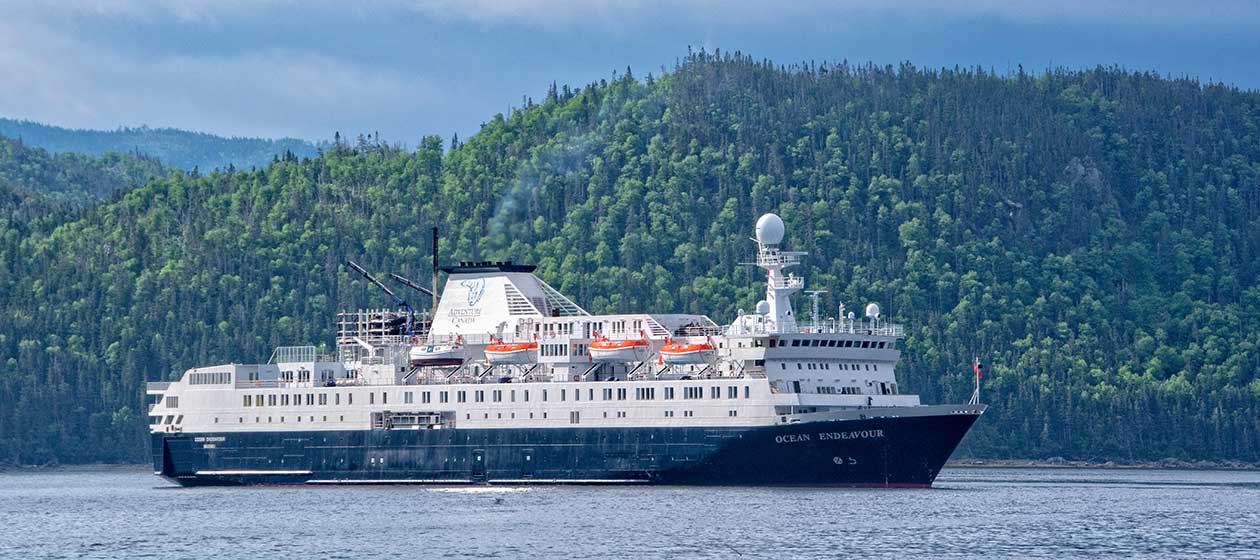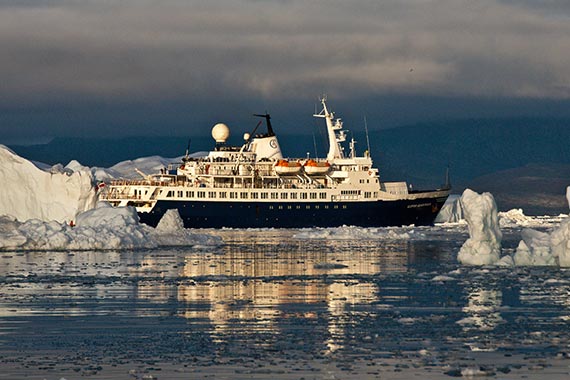Newfoundland Circle
Von der Stadt St. Johns aus startet diese Schiffsreise zuerst in Richtung Nord-Ost Neufundland und anschliessend weiter zur Inselspitze nach L’Anse aux Meadows. Hier befindet sich die einzige Vikinger-Stätte in ganz Nordamerika, welche auch allgemein als eine der wichtigsten archäologischen Standorte angesehen wird. Weiter führt die Schiffsreise über Red Bay zum Gros Morne Nationalpark, welcher entlang der Küste Neufundlands liegt. Die wichtigsten Merkmale des Parkes sind Klippen, tiefe Fjorde, vulkanische Felsen und die Tafelberge. Hier finden wir eine wüstenartige Mondlandschaft aus rotem Gestein, welche die tatsächliche Erdkruste zum Vorschein bringt. Forschungen im Gebiet der Plattentektonik sind hier von grosser Bedeutung, weshalb der Nationalpark zum UNESCO Weltnaturerbe erklärt wurde. Die Weiterreise führt uns entlang der unbekannten Südküste, wo wir auf sehr einsame Ortschaften treffen und mit Zodiak Booten Ausflüge in die Fjordlandschaften machen werden.
Bevor wir St. John’s wieder erreichen und ausschiffen, besuchen wir noch Miquelon/St. Pierre, das letzte Gebiet, welches noch im Besitz von Frankreich ist. Der Newfoundland Circle ist eine nicht alltägliche Schiffsreise weitab vom Touristenstrom.
Welcome to St. John’s - Newfoundland’s historic, vibrant capital. Sailing out of the port of St. John’s, Signal Hill keeps watch as we exit the world-famous Narrows. The charming houses of the Battery are always a hit with shutterbugs. Watch for icebergs, whales, and seabirds as we sail!
The northeast coast of Newfoundland is known for the dozens of picturesque villages that dot its rocky shores, and we’ll find harbour in one of these unique communities. Expect a friendly Newfoundland greeting upon arrival. Don't miss the chance to spot massive icebergs, majestic whales, and seabirds while exploring the area. Photographers will be delighted to capture the unique beauty of Newfoundland's natural wonders.
L’Anse aux Meadows, a UNESCO World Heritage Site, is the only authenticated Norse settlement in North America. The archaeological remains found here in 1960 date to approximately 1000 CE. Amazingly, the location was first established by a close reading of the Viking sagas.
Today, a superb interpretation centre and several reconstructed Norse-style sod buildings make L’Anse aux Meadows a must-see for any visitor to Newfoundland and Labrador.
The Red Bay Basque Whaling Station became a UNESCO World Heritage site in 2013. Basque whalers operated out of the Red Bay harbour in the 1500s: North America’s first export industry.
The interpretation centre at Red Bay is excellent. Here we find tools, personal items, and navigational instruments recovered from the wreck of the whaling ship San Juan. The ship was lost in a storm in 1565 and found centuries later submerged in the harbour. We'll visit nearby Saddle Island to learn the history of the whaling industry.
Gros Morne National Park's Tablelands, a six-hundred-metre plateau, form one of the world’s best examples of exposed mantle. Normally found below the Earth’s crust, the mineral-rich rocks support very little life, making the Tablelands an eerie landscape. We will offer various walking and hiking options here. Views of Bonne Bay are spectacular. Gros Morne’s interpretation centre is excellent and the town of Woody Point is a delight to explore.
The wild and windswept coast of southern Newfoundland is home to a few remaining outport communities. Visits here are often a highlight of our trips. There are many choices of unique bays and coves to explore via Zodiac or land excursions. Along the coast, the geology is outstanding, and the plant life is gorgeous. We’ll be on the watch for wildlife, too. We’ll make the most of every chance to explore this beautiful and remote coast.
The First Nations community of Miawpukek became a permanent settlement sometime around 1822. Before then, it was one of many semi-permanent camping sites used by the Mi'kmaw people - who had traditionally travelled nomadically throughout the east coast of Canada. Since its establishment as a reserve in 1987, Miawpukek has successfully bridged traditional knowledge and contemporary practice. We will receive a formal welcome from local leaders and have a chance to explore this special community.
Explore Saint-Pierre, a last bastion of France’s colonial territories in North America. The colourful and charming shops and residences of the town of Saint-Pierre reveal its unique historical character.
French food, wine, clothing, and culture are all on offer here. The sweets at the local cafes and bakeries are in high demand. Saint-Pierre offers a taste of European living, just a short sail from the coast of Newfoundland!
On the final day of our expedition, we sail back though the Narrows and into St. John’s harbour. We will say our farewells and the expedition team will be on hand to assist you with luggage and transportation arrangements.
Preise
| Preis pro Person in Viererkabine | CHF | 6’710.– |
| Preis pro Person in Dreierkabine | CHF | 7’670.– |
| Preis pro Person in Doppelkabine (Innen) | CHF | 8’920.– |
| Preis pro Person in Doppelkabine (Aussen) | CHF | 10’170.– |
Hinweis
Weitere Kabinen-Kategorien sind auf Anfrage erhältlich.
Je nach Verfügbarkeit sind Einzelkabinen ohne Zuschlag für Kat. 3-7 möglich (begrenzte Verfügbarkeit).
Reisedaten
01. bis 12. Oktober 2025
Im Preis inbegriffen
- Sämtliche Übernachtungen
- Alle Mahlzeiten an Bord
- Sämtliche Eintritte, Permits und Nationalparkgebühren
- Englischsprachiges Expeditionsteam und wissenschaftliche Vorträge an Bord
- Alle Landausflüge und Zodiacfahrten während der Schiffsreise
- Obligatorische Discovery Fund Fee USD 250 pro Person
- Hafengebühren
Nicht im Preis inbegriffen
- Flüge
- Allfällige Treibstoffzuschläge
- Hotelübernachtungen vor und nach der Kreuzfahrt
- Trinkgelder ca. USD 15 pro Person/Tag
- Weitere optionale Ausflüge und Eintritte
- Persönliche Ausgaben
Hinweise
Die Route und das endgültige Programm während der Schiffsreise werden vor Ort vom Expeditionsleiter und dem Kapitän anhand der Eis- und Wetterverhältnisse sowie der Möglichkeiten zu Tierbeobachtungen entschieden. Der hier beschriebene Reiseverlauf dient lediglich als Beispiel.
Der Abschluss einer Auslandskrankenversicherung mit Krankenrücktransport muss nachgewiesen werden.
Bei den Kategorien 3-10 handelt es sich um Doppelkabinen. In Kategorie 2 (Dreierkabine) und Kategorie 1 (Viererkabine) teilen Sie sich die Kabine mit anderen Gästen.


.jpg)

